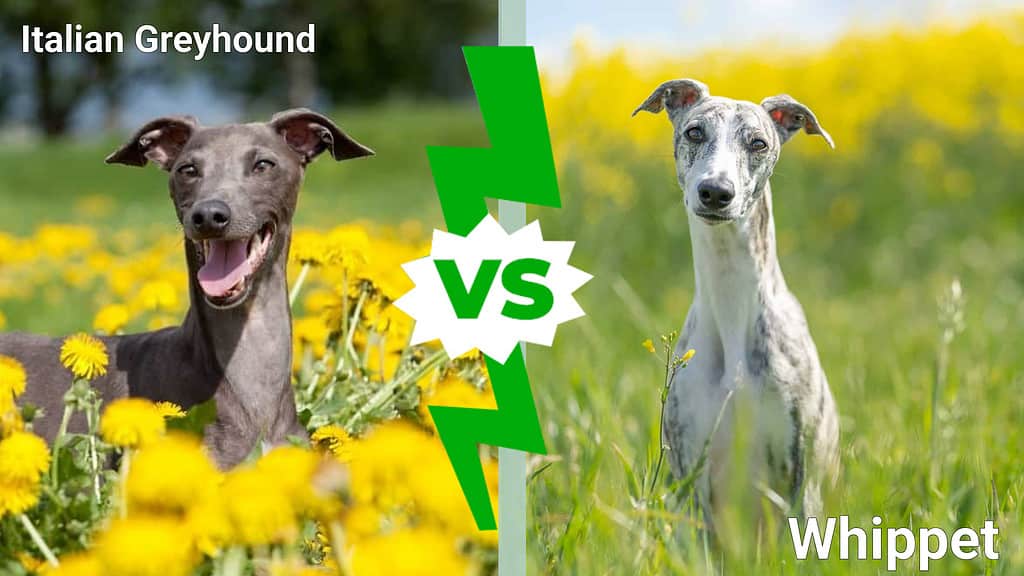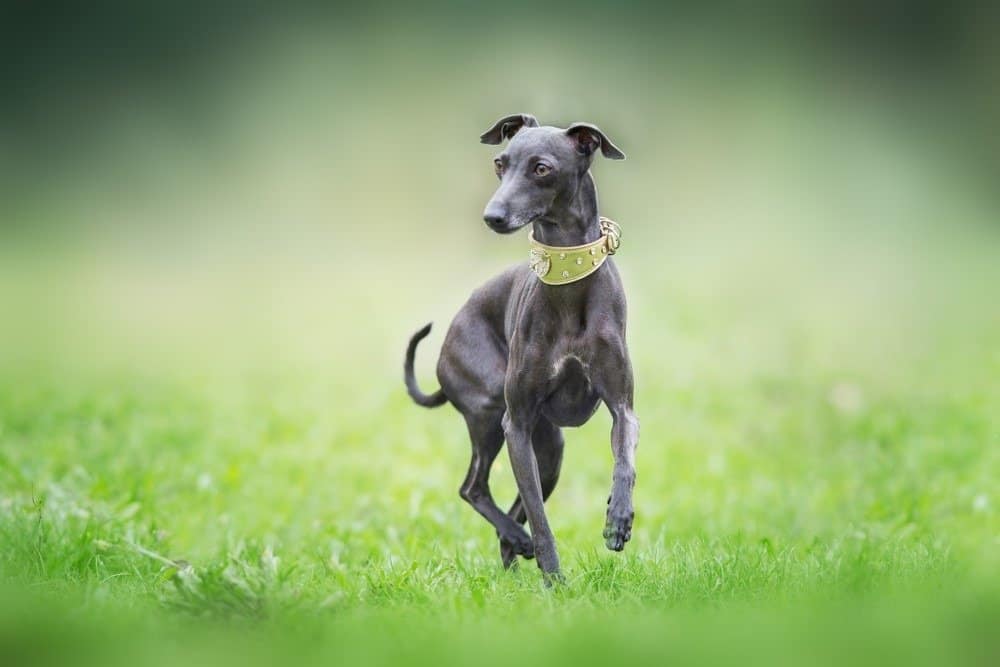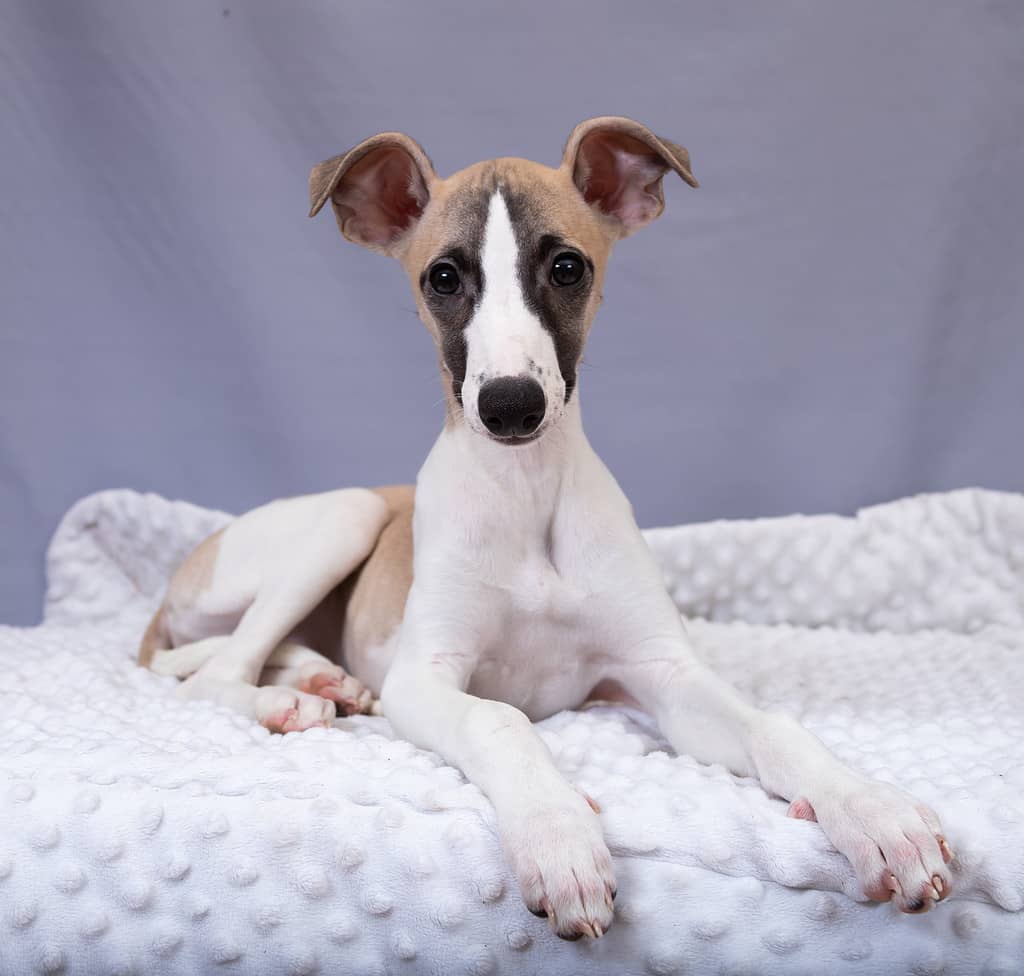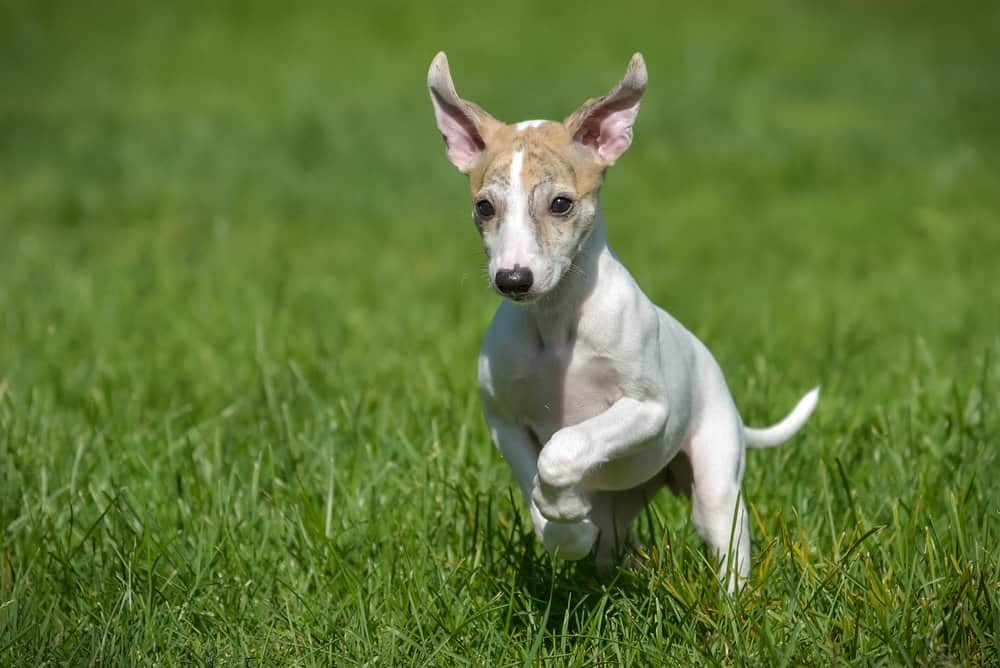When it comes to the choice between an Italian greyhound and a whippet, it’s hard to choose wrong! These breeds are very similar.
Italian greyhounds are smaller than whippets, need less space to run, and live slightly longer. Whippets are large dogs that require a fenced area to sprint. Both breeds are affectionate, sensitive, and have high prey drives.
In this article, we’ll talk more about the differences between these breeds and whether an Italian greyhound or a whippet is the best dog for you.
Italian Greyhound vs. Whippet: A Comparison

| Key Differences | Italian Greyhound | Whippet |
| Height | 13-15 inches | 18-22 inches |
| Weight | 7-14 pounds | 25-40 pounds |
| Temperament | Affectionate, friendly, sensitive | Affectionate, energetic, sensitive |
| Exercise Needs | Needs moderate exercise and space to run | Needs moderate exercise and space to run |
| Trainability | Can be aloof and has a strong prey drive | Can be aloof and has a strong prey drive |
| Life Expectancy | 14-15 years | 12-15 years |
Key Differences Between Italian Greyhounds and Whippets
The three key differences between Italian greyhounds and whippets are size, exercise needs, and life expectancy.
Italian greyhounds are smaller and live slightly longer on average. Whippets are much larger and need more space to accommodate their need to sprint.
Let’s dive into these differences as well as the similarities between these sighthound breeds!
Appearance

Italian greyhounds are smaller than whippets.
©Kwadrat/Shutterstock.com
Size
Whippets stand 18-22 inches at the shoulder, making them large dogs. Italian greyhounds are much smaller at 13-15 inches tall.
Whippets weigh 25-40 pounds, and Italian greyhounds weigh 7-14 pounds.
Larger dogs cost more to feed and vet, while small dogs are easier to exercise indoors and need less space.
Coat
Both breeds have short, fine coats in a wide range of colors and patterns. They’re more prone to getting cold in the winter and getting sunburned in the summer than longer or thicker-coated breeds.
Characteristics

Italian greyhounds and whippets may not get along with small animals such as cats.
©Viktoria Koval/iStock via Getty Images
Temperament
Sighthound breeds tend to share a similar temperament. They’re sensitive, sometimes stubborn, and often compared to cats.
These dogs weren’t built for endurance but to get their energy out by sprinting. This means they’re typically calm most of the day, happy to laze on their favorite dog bed until their next run.
Social Needs
Both breeds tend to get along well with other dogs, though every dog is an individual. It’s important to make introductions slowly, with both dogs on leash and under your control.
Since these breeds have strong prey drives, they must be kept away from prey animals. Some may see cats as prey and cannot live with them, while others live well with their feline companions.
Some whippets do best with dogs of their size or larger, as they can see smaller dogs as prey to chase.
They can be great with children, though you’ll want to keep their size in mind. Tiny Italian greyhounds can be easily hurt by rough handling. Whippets are large enough to knock a small child over while sprinting around.
Never leave children and dogs together unsupervised, no matter how good they are with one another.
Exercise Needs
Though their exercise needs are similar, Italian greyhounds are easier to exercise indoors. Since they’re small, sprinting around the living room is often enough to tire them out.
Whippets need a securely fenced yard to run around in. Daily walks will also provide exercise and mental stimulation for both breeds.
Trainability
No dog responds well to harsh training methods, but sighthounds are especially sensitive. Make sure to use force-free training methods only!
Although they can be stubborn, developing a good relationship with your dog will go a long way, as will daily training sessions. Keep them short and fun so that your pup always wants to come back for more.
Italian greyhounds and whippets both have strong prey drives, and training a reliable recall is usually very difficult. It’s better to keep them on a leash or enclosed with a fence at all times than to try to train out their instincts.
Health Factors

Whippets and Italian greyhounds can live an average of up to 15 years.
©Radek Havlicek/Shutterstock.com
Life Expectancy
These breeds have very similar life expectancies, each living up to 15 years on average. Italian greyhounds tend to live a bit longer, with average lifespans of 14-15 years compared to whippets’ 12-15 years.
Health Problems
Italian greyhounds are prone to health issues such as luxating patella, Legg-Calve-Perthes disease, and hypothyroidism. Whippets are prone to deafness, heart disease, and musculoskeletal problems.
Neither breed is built to handle extra weight, and obesity can be detrimental to their joint health as well as their overall health.
As deep-chested breeds, they’re also prone to bloat, an emergent and deadly condition in which the stomach flips inside of the body. Whippets may be more prone to bloat due to their larger size.
Wrapping Up: Italian Greyhound vs Whippet
When deciding between an Italian greyhound or a whippet, think about the size of the dog you’d like to adopt. This is the major difference between these breeds, which are otherwise very similar.
If you want a dog you can play with indoors, or you live in an apartment, an Italian greyhound is likely the best choice. If you have a fenced yard and love large dogs, you may prefer a whippet.
Thank you for reading! If you have feedback on this post, please contact the AZ Animals editorial team.
The photo featured at the top of this post is ©
Ready to discover the top 10 cutest dog breeds in the entire world?
How about the fastest dogs, the largest dogs and those that are -- quite frankly -- just the kindest dogs on the planet? Each day, AZ Animals sends out lists just like this to our thousands of email subscribers. And the best part? It's FREE. Join today by entering your email below.
Thank you for reading! Have some feedback for us? Contact the AZ Animals editorial team.






